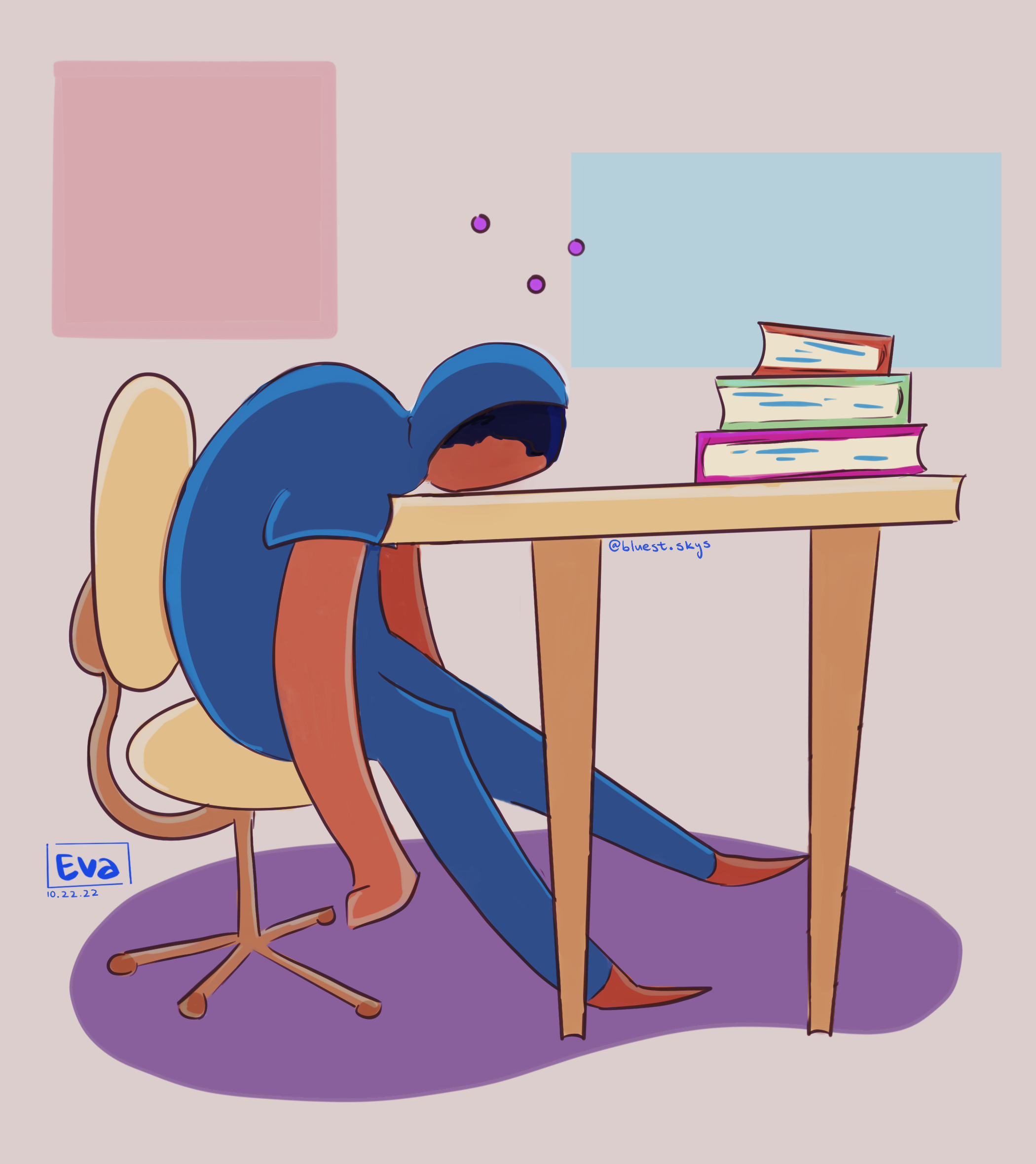Schools respond to complicated issue of student mental health
By Olivia Morrison ‘24
Graphic by Eva Vu-Stern‘24 @bluest.skys
These days, it’s impossible to turn on the TV, open a computer, or scroll on social media without hearing about adolescent mental health.
Growing numbers of teenagers are experiencing chronic stress, which is compromising their mental health, according to a study by NYU. The public is being forced to face the truth: poor mental health is a growing problem for teenagers in America. More than 1 in 3 high school students experienced persistent feelings of sadness or hopelessness in 2019, a 40% increase since 2009, according to the CDC.
In 2019, Governor Kate Brown attempted to address this issue by passing a bill allowing all Oregon students to take excused mental health days off from school. This was a progressive step because many states have not yet passed related bills. Even so, high school students' mental health has continued to decline, with The Oregonian stating that rates of teen depression skyrocketed in Oregon during the pandemic. So what are individual schools doing about it?
This year, Grant High School (GHS) in Northeast Portland has taken steps to encourage student wellness by implementing a once-a-month mental health day, that corresponds with a teacher planning day. These mental health days are a good start, according to GHS student, Robin Sack.
“[Mental health days] give kids some opportunity to take care of themselves,” Sack said. “But I also think there are many more steps to be taken within school, and expanding it from one day.”
So, what are mental health days?
“Mental health days are a time to breathe, catch up, or do anything that would help reduce stress,” said CGS Upper School counselor Erin Gilmore.
“The amount of things that kids are involved in, the amount of different hats that they’re balancing and juggling are more than it ever was in my day, and you’re also getting your attention pulled in different directions with social media, so there's not a lot of downtime,” Gilmore added. “The stress just kind of builds on itself.”
In a survey sent out to the CGS Upper School, students answered questions about the issues of stress, mental heath, and school’s effect on those things.
Of the students surveyed, 85.8% agreed with the statement “school makes me stressed.” When asked to respond to the statement “all-school mental health day would be a good idea,” 83.4% of the students agreed. However, 68.7% of students said they would be unlikely to take a mental health day, saying that missing class instruction and work only made them more stressed. This presented the idea that taking mental health days, for students, may not be a valuable solution.
CGS’s head of the Upper School Aline Garcia-Rubio, explained how the CGS schedule is deliberately created to try to be thoughtful of students' mental health. The idea of wellness encompasses many different things, a few of those being good amounts of sleep, connections with family and friends, and the right balance of work and stimulus.
For example, the Upper School day starts later than in the past, at 8:30 am rather than 8:00 am, allowing Upper Schoolers to get more sleep on a regular basis. The schedule also builds in breaks, such as Co-Cu, which allows students to work on homework and get help from teachers, and Community Connections, an early dismissal designed to give students time to improve their well-being.
Community Connections is purposely scheduled on Wednesday afternoons, when the workload is at its peak, to provide a buffer for students to do things like take a nap, get started on homework early, or spend some time with friends.
“When I was a student here, seven classes met every day, you had seven loads of homework every night, and it was a deliberate change to move away from that because of wellness,” Garcia-Rubio added.
The structure of the CGS schedule is made to encourage wellness in a continuous way for students, a method preferred by CGS over the approach taken by GHS.
“The structures are set in place to be a constant, rather than an occasional day,” says Garcia-Rubio. “The premise of having an occasional day off means that everyone would benefit from the same thing at the same time, which is largely not true if you examine that a little bit. You and your friends likely don’t feel the same way at the same time and need the same relief simultaneously.”
What works well for one school may not work for another. As a Portland Public School, GHS needs to meet the required 900 hours of instructional time per year, limiting the number of breaks the schedule is able to accommodate. CGS is an independent institution, making it easier for the school to design a schedule with more breaks throughout the week, based on students’ needs.
Schools are trying to take steps to promote student wellness, whether through a single mental health day once a month or more constant but shorter breaks throughout the week. Neither accomodation will completely solve the issue of declining teenage mental health, but they outline one possible improvement for an ever growing problem.

